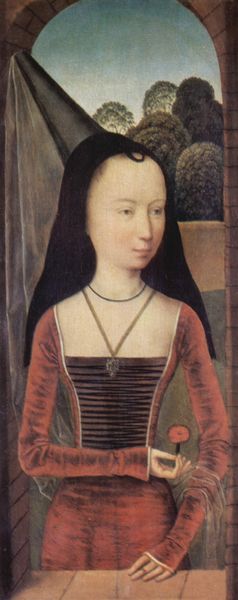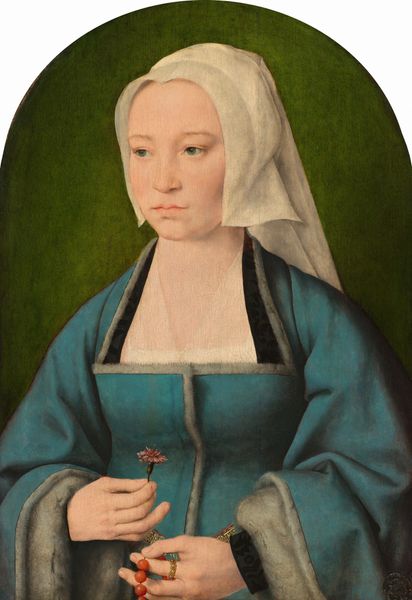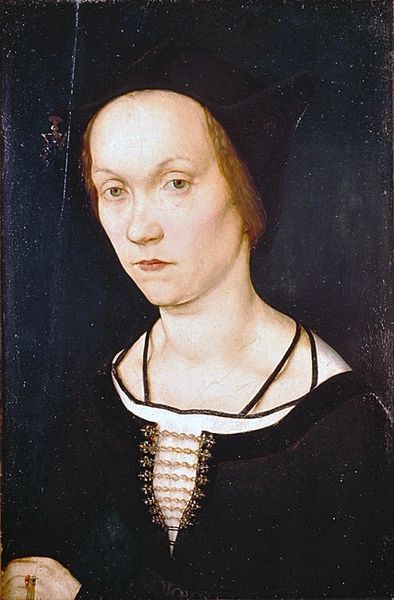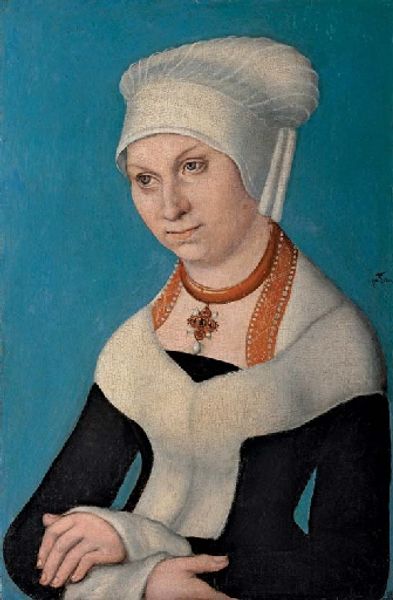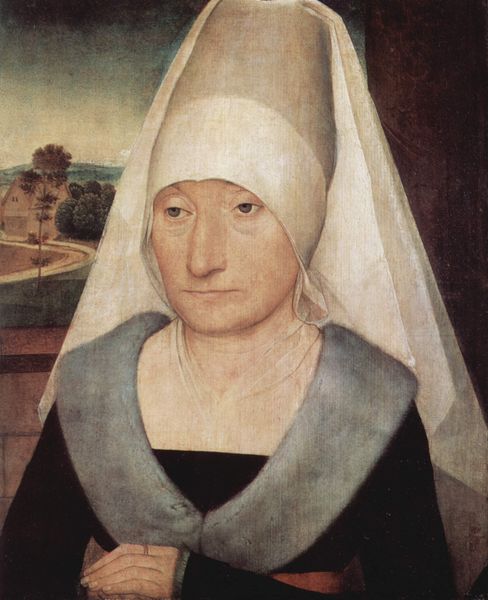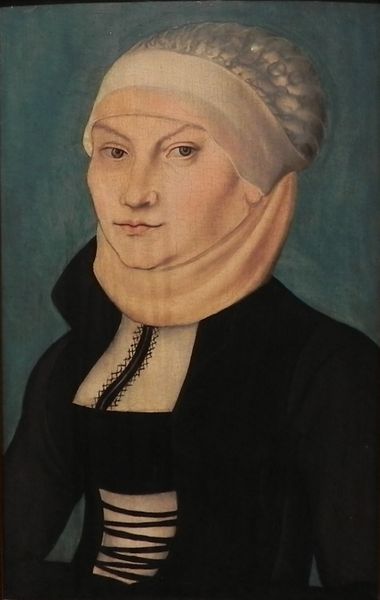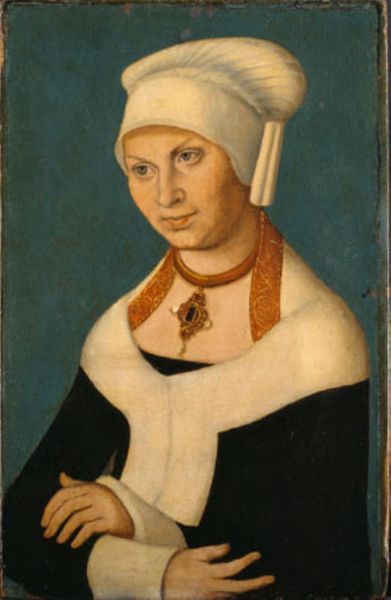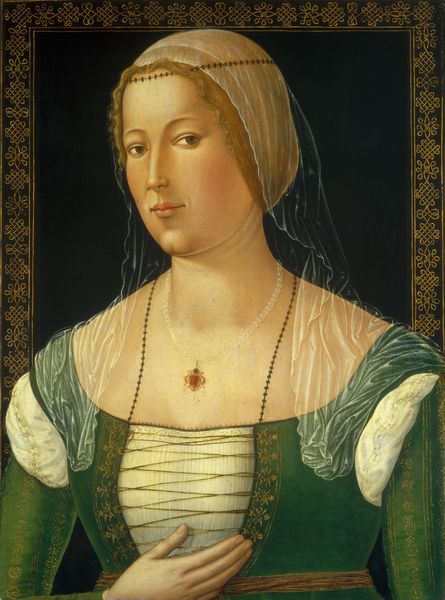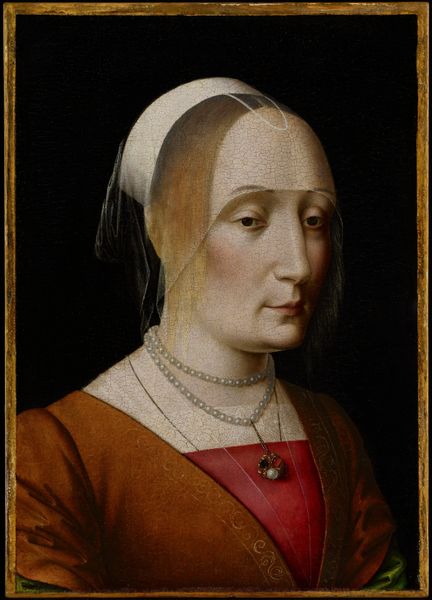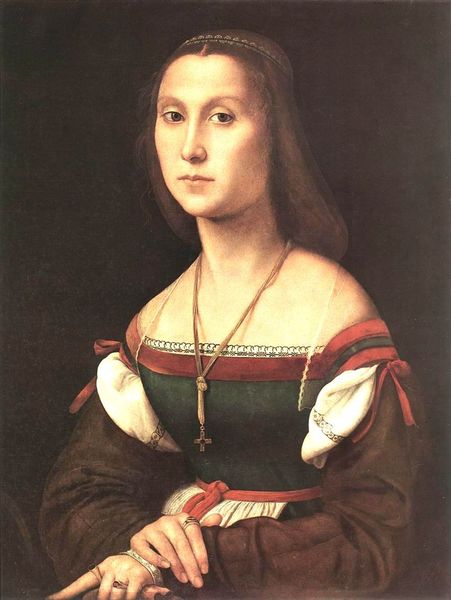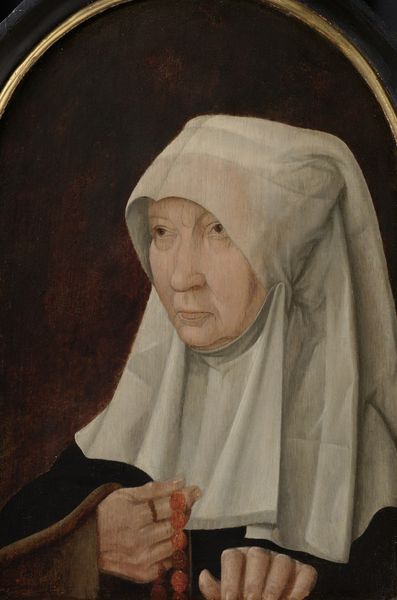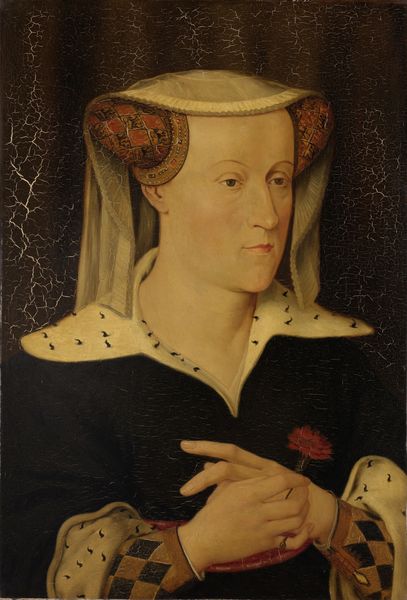
Portrait of a Young Woman 1480
0:00
0:00
hansmemling
Memling Museum (Old St. John's Hospital), Bruges, Belgium
painting, oil-paint
#
portrait
#
painting
#
oil-paint
#
figuration
#
11_renaissance
#
northern-renaissance
Dimensions: 38 x 26.5 cm
Copyright: Public domain
Curator: Here we have Hans Memling's "Portrait of a Young Woman," an oil painting dating back to 1480, a prime example of Northern Renaissance portraiture. Editor: It strikes me as simultaneously serene and haunting. Her gaze is averted, her expression reserved, yet those carefully rendered details… the light catching the veil, the jewelry… it hints at something deeper, doesn't it? Curator: Absolutely. It is a window into the social structures of the time. Consider the context: commissioned portraits like this were a display of wealth, status and piety in the Bruges of the 15th century. Notice the delicate rings and the ornate necklace, clear markers of belonging to a privileged class. Editor: Yes, but it's the pendant itself that draws me in. Its form feels both decorative and devotional. The tiny cross-like adornment suggests a delicate interplay of faith and worldliness so characteristic of Renaissance symbolism. Curator: Indeed, the cross subtly woven into a jewel is symbolic, isn’t it? The choice to display her finery isn’t merely for vanity. Rather it denotes piety manifested through earthly blessings. This image plays a clear public role—a proclamation. Editor: I agree, but look at her hands; the placement, so deliberately posed… they seem almost weightless, disconnected. Does that distance signify her expected passivity? Curator: A thoughtful interpretation. We must also remember the patron’s demands; these portraits follow conventions dictating how women were represented in society. The downcast eyes signal modesty. The delicate hands are a mark of refinement—she doesn't engage in manual labor. Editor: But her youth too makes it almost into an icon for impending motherhood, if the lettering above her suggests some commemorative verse marking that event? It gives her presence here, caught forever in pigment and oil, this other meaning. Curator: That commemorative aspect certainly adds another layer to the piece. Perhaps a record of potential, captured for prosperity, shaped by family pride and expectations. The inscription lends even greater historical importance, yes? Editor: Precisely, what fascinates me about such portraits is precisely this dance, this tightrope walk across social and personal symbol systems, all rendered into visible, tangible forms that endure centuries later. Curator: I agree, these images were crucial in constructing and perpetuating social narratives, offering valuable insights into societal values. Looking at "Portrait of a Young Woman", we’re examining both personal representation and the projection of status onto the Northern Renaissance stage. Editor: A stage, indeed, where one's likeness wasn’t just about capturing physical form but conveying social standing. So much encoded meaning to unravel and discover in Memling's masterpiece!
Comments
No comments
Be the first to comment and join the conversation on the ultimate creative platform.


